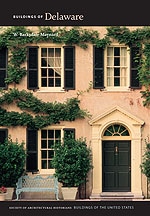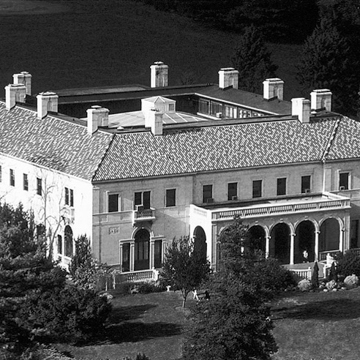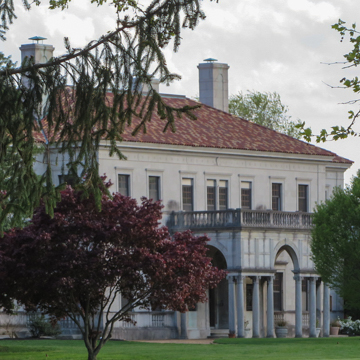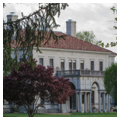From 1910 to 1930, this forty-eight-acre estate overlooking the Delaware River was home to financier John Jacob Raskob, protégé of Pierre S. du Pont. The Democratic National Committee met here in 1928, when Raskob managed the campaign of a fellow Catholic, New York governor Al Smith. Later, Raskob oversaw the creation of the Empire State Building (1929–1931), in order to give Smith a new project after his election defeat. Designed by a firm from New York City, Archmere is Delaware's finest example of twentieth-century residential Italianate, both in the main house (The Patio) and nearby Manor Hall, built for Raskob's servants and with room for eleven cars. An underground tunnel connected the two. The Patio was constructed of limestone, with a front porch copied from the famous Pazzi Chapel, Florence, Italy (fifteenth century). The tile-roofed house surrounds a 2,000-square-foot courtyard (or patio, as it was called) with a fountain at the center depicting children—appropriate, as Raskob had thirteen of them. The 4,225-square-foot ceiling of Tiffany stained glass could be opened in summer. The opulent interiors included a paneled library and a music room.
After Raskob moved to Maryland (taking the shrubbery with him), the Norbertine Order purchased the estate in 1932 and established Archmere Academy. A Moderne concrete gymnasium with glass-brick windows (1939; enlarged 1966) survives. Nearby stand St. Norbert Hall (1958–1959, George McDermott) and the modernist Justin E. Diny Science Center, by a Scranton-area firm (1971–1973, Burkavage Design Associates; 2001–2003 renovated and enlarged, Buck Simpers Architect + Associates). McLaughlin-Mullen Student Life Center is the newest addition to campus (2003–2007, Anderson Brown Higley Associates).


















